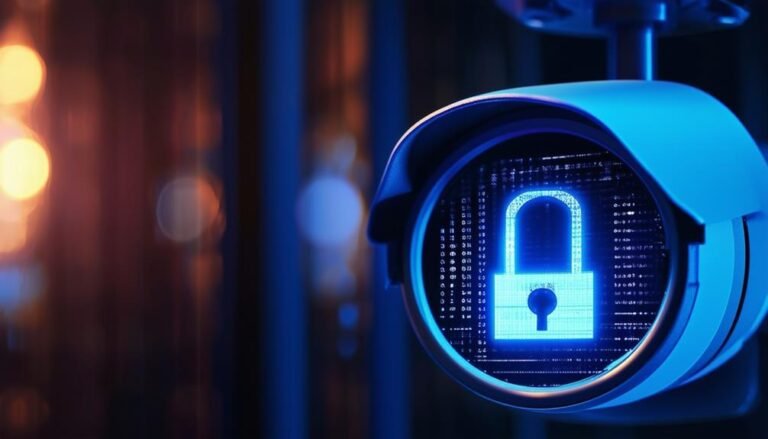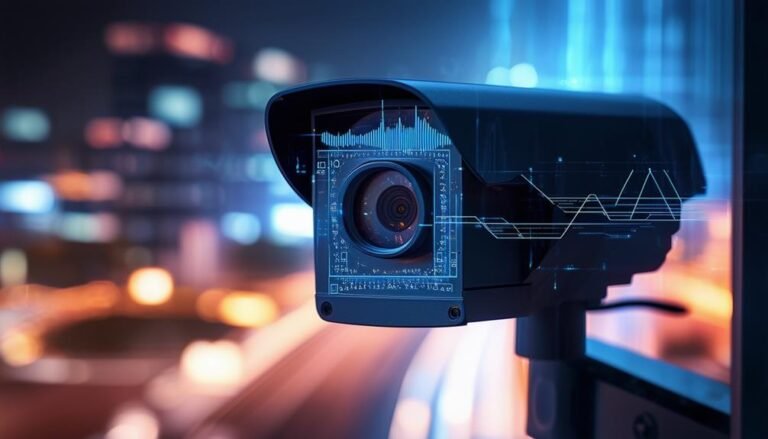To hard reset your Dahua DVR, first locate the reset button, which may be on the front or rear panel. Make sure you back up any important data as this process will wipe all settings. Once you've found the button, power on the DVR and press and hold the reset button for about 10 seconds until it reboots. After the system initializes, you'll need to reconfigure your device, including network settings and camera connections, to restore functionality. Want to know more tips for troubleshooting and maintaining your DVR?
Understanding Hard Reset
When it comes to electronic devices, sometimes you just need a fresh start, and that's where a hard reset comes in. A hard reset is a powerful tool that clears out any glitches or issues your device might be experiencing, restoring it to its original factory settings. This can be particularly useful if your Dahua DVR is misbehaving or not functioning as it should. It's like hitting a reset button on life; you're giving yourself the freedom to start anew.
You might wonder why you'd want to perform a hard reset. Well, it revolves around regaining control. Whether you've forgotten your password, your device is freezing, or you just want to wipe everything clean for a fresh setup, a hard reset can be your best friend. It clears away all the clutter, both digital and mental, leaving you with a blank slate to work from.
However, be aware that a hard reset will erase all your stored settings and data. This means you'll lose any custom configurations or recordings you've made. So, it's crucial to weigh the pros and cons before diving in. Still, if you're feeling trapped by a malfunctioning device, this method can offer you the freedom to regain your control and get your DVR back on track. Embracing the idea of a hard reset means embracing new beginnings and the opportunity to create a better experience with your technology.
Preparing for the Reset
Before you initiate the hard reset on your Dahua DVR, it's important to get everything in order. This isn't just a technical step; it's about reclaiming control over your device and guaranteeing a smoother experience afterward. First, make sure you've backed up any essential footage or settings you want to keep. Once the reset happens, all your configurations will be wiped clean, so it's vital to save anything valuable.
Next, check your power supply. Confirm your DVR is plugged in securely and the outlet is functioning properly. It's a good idea to avoid any interruptions during the reset process, as this could lead to further complications.
You should also gather any necessary tools. While you may not need much, having a screwdriver handy could be useful for accessing certain components or panels if required.
Locating the Reset Button
To successfully hard reset your Dahua DVR, you first need to find the reset button's location. Different DVR models have this button in various spots, so it's crucial to know which model you have. You'll also want to gather any tools required to access and press the button.
Understanding Reset Button Location
Finding the reset button on your Dahua DVR is essential for performing a hard reset. This button is typically small and may be located in different areas depending on your model. To make the search easier, you can refer to the following table that outlines common reset button locations and their characteristics:
| Model Type | Reset Button Location | Button Characteristics |
|---|---|---|
| DVR with Front Panel | On the front panel, near the power button | Small, often requires a pin to press |
| DVR with Rear Panel | On the rear panel, near the power supply | Slightly recessed, may be labeled |
| Remote Control DVR | On the remote control, often a combination of buttons | Requires specific button press sequence |
| Standalone DVR | Inside the casing, accessible after removing the cover | Usually a small switch or button |
Once you locate the reset button, you can proceed with the hard reset process. Remember, this action can restore your DVR to factory settings, so verify you're ready for that step. With a little patience and persistence, you'll reclaim control of your device and enjoy the freedom of a well-functioning DVR.
Common DVR Models
Which common DVR models should you be aware of when locating the reset button? Knowing the right models can save you time and hassle when you're in need of a hard reset. Here are some popular models to keep in mind:
- Dahua XVR Series: A versatile option that supports multiple camera formats.
- Dahua DVR Series: Great for traditional analog setups with reliable performance.
- Dahua NVR Series: Perfect for IP cameras, offering advanced features and flexibility.
- Hikvision DVRs: Widely used, with a similar reset button location to Dahua devices.
- Lorex DVRs: Known for user-friendliness, making them a favorite for home security systems.
Each of these models may have slightly different reset button locations, but most are designed for easy access. Typically, the reset button can be found on the back or bottom of the unit. Knowing where to look can empower you to regain control of your DVR swiftly. Just remember, your ability to reset your device can mean the difference between frustration and freedom in managing your security system.
Tools Required for Reset
Before you plunge into the hard reset process, it's essential to gather the right tools. This will make the task smoother and guarantee you can regain control of your Dahua DVR without unnecessary hassles. Here's what you'll need:
| Tool | Purpose |
|---|---|
| Screwdriver | To open the DVR casing |
| Flashlight | To locate the reset button easily |
| Paperclip or Pin | To press the reset button |
| User Manual | For model-specific instructions |
Your primary focus should be on locating the reset button, which is often hidden within the unit. Typically, it's a small, recessed button that requires a bit of finesse to access. Using a paperclip or a pin is ideal for this task, as it allows you to press the button without damaging the device.
Steps to Perform the Reset
Performing a hard reset on your Dahua DVR is a straightforward process that can help restore your device to its factory settings. If you're looking to regain control and eliminate any issues, following these steps will get you back on track.
- Confirm your DVR is powered on.
- Locate the reset button on the DVR.
- Use a pointed object, like a paperclip, to press and hold the reset button.
- Wait for the device to reboot; this usually takes about 10 seconds.
- Release the reset button once you see the system start to initialize.
First, make sure your DVR is plugged in and powered on. Next, find the reset button, usually located on the back or bottom of the unit. It's often small and recessed, so you'll need something pointed to reach it. Press and hold this button for about 10 seconds. You'll notice the DVR rebooting; that's when you should release the button.
Once the process is complete, your DVR will revert to its original settings, giving you a clean slate to work with. Remember, this action will erase all your current settings, so it's a good idea to back up any important data beforehand. With these simple steps, you're taking charge of your device, guaranteeing it runs smoothly and effectively, allowing you the freedom to customize it according to your needs.
Configuring Your DVR After Reset
Configuring your DVR after a hard reset can feel like a fresh start, allowing you to tailor the system to fit your specific needs. Once you've reset your DVR, you'll need to go through several steps to guarantee it operates at peak performance and securely. Here's a quick guide to help you navigate this process:
- Network Setup: Connect your DVR to your network. Confirm you're using a stable connection for seamless operation.
- User Account: Create or update your admin account. This step is vital for maintaining security and control over your system.
- Camera Configuration: Reconnect your cameras and set the desired resolution and frame rate for each. This will enhance your monitoring experience.
- Recording Schedule: Set your recording preferences based on your needs. You can choose continuous recording or motion detection.
To make this process smoother, here's a simple reference table:
| Step | Description |
|---|---|
| Network Setup | Connect DVR to your network. |
| User Account | Create or update your admin account. |
| Camera Configuration | Set up camera settings and preferences. |
| Recording Schedule | Customize recording modes and times. |
Troubleshooting Common Issues
If you're facing issues with your Dahua DVR, it's essential to identify whether the problem lies with power or network connectivity. You might notice that your device isn't turning on or is struggling to connect to your network. Let's go over some quick solutions to get your system back on track.
Power Issues Resolution
Power issues can be frustrating, especially when they disrupt your surveillance needs. If your Dahua DVR's not powering on or keeps shutting down unexpectedly, there are a few steps you can take to troubleshoot.
- Check the power supply and verify it's properly connected.
- Inspect the power cord for any damage or fraying.
- Verify that the outlet is functioning by plugging in a different device.
- Confirm the DVR isn't overheating; clean any dust from the vents.
- Try a different power adapter if available.
Start by confirming that the DVR's power supply is securely connected. If you're using a power strip, switch to a direct outlet. A faulty power cord can often lead to intermittent issues, so inspect it closely. If the DVR continues to overheat, consider relocating it to a cooler environment.
Sometimes, a simple reset can do wonders. If you've gone through these steps and your DVR still isn't responding, it might be time to consult the user manual or reach out to Dahua's support team for further assistance. Remember, a little troubleshooting can go a long way toward restoring your peace of mind.
Network Connectivity Problems
After addressing power issues, you might encounter network connectivity problems with your Dahua DVR. These issues can be frustrating, especially when you're trying to monitor your property remotely. First, check your cables and verify everything's firmly connected. Loose connections can lead to intermittent or lost signals.
Next, verify your network settings. Access your DVR's menu, navigate to the network configuration, and confirm that the IP address, subnet mask, and gateway are correctly set. If you're using DHCP, verify your router's settings allow for it, and try assigning a static IP to avoid conflicts.
Firewall settings on your router can also interfere. Make sure the DVR's IP is whitelisted or adjust your firewall to allow traffic. If you're using Wi-Fi, verify the signal strength is sufficient. Weak signals can lead to disconnections.
Lastly, reboot your DVR and router. Sometimes, a simple reset can resolve connectivity hiccups. If problems persist, consider consulting your DVR's manual or reach out to Dahua's customer support for further assistance. Getting your system running smoothly will give you the freedom to monitor your assets without hassle.
Additional Tips for Maintenance
Keeping your Dahua DVR in top shape requires a bit of regular upkeep. By following these maintenance tips, you can guarantee your system runs smoothly, giving you peace of mind and freedom to focus on what really matters.
- Regularly check for firmware updates to enhance performance.
- Clean the DVR unit and surrounding area to prevent overheating.
- Monitor hard drive space to avoid recording interruptions.
- Confirm all cables are securely connected, reducing connectivity issues.
- Schedule periodic reboots to refresh the system.
Taking these small steps can help you avoid bigger problems down the line. First off, always keep your firmware updated. Manufacturers release updates that can fix bugs and introduce new features. A quick check every few months can save you from headaches later.
Next, don't underestimate the power of cleanliness. Dust can accumulate and block ventilation, leading to overheating. A simple wipe-down can improve airflow and prolong your DVR's lifespan.
Keeping an eye on your hard drive space is essential, too. If it gets too full, you might miss out on important recordings. Set a reminder to review and delete unnecessary footage regularly.
Lastly, double-check those connections. Loose cables can cause unexpected issues, so it's worth inspecting them periodically. A reboot now and then can also keep your system fresh.
When to Seek Professional Help
Even with regular maintenance, there may come a time when your Dahua DVR encounters issues that are beyond simple troubleshooting. If you find yourself facing persistent problems like frequent system crashes, failure to record, or connectivity issues that won't budge despite your best efforts, it might be time to contemplate seeking professional help.
You shouldn't feel trapped or overwhelmed when technology doesn't cooperate. Sometimes, a fresh set of experienced eyes can make all the difference. If you're unsure about performing a hard reset or if the device doesn't respond after attempts to reset it, a professional can diagnose the problem accurately and safely.
Additionally, if your DVR is still under warranty, tampering with it yourself might void that warranty. Professionals are equipped with the tools and expertise to handle repairs or replacements without jeopardizing your coverage.
If you're dealing with advanced features or integrations that you're not familiar with, like remote access setup or network configurations, a knowledgeable technician can guarantee everything's properly configured for peak performance.
Frequently Asked Questions
Will a Hard Reset Delete All My Recorded Footage?
If you're wondering whether a hard reset will delete all your recorded footage, the answer is yes, it typically does. When you perform a hard reset, it restores the device to factory settings, wiping all existing data, including recordings. If you value your footage, consider backing it up before proceeding. It's always a good idea to safeguard your important data, ensuring you don't lose anything valuable in the process.
Can I Recover Settings After a Hard Reset?
Imagine you've just reset your device, and now you're wondering if you can get back those settings you painstakingly customized. Unfortunately, a hard reset typically wipes everything, including your settings. You won't be able to recover them unless you've made a backup prior to the reset. So, it's essential to regularly save your configurations. Embrace the freedom of knowing your preferences are safe, ensuring you won't face this dilemma in the future!
Is a Hard Reset Safe for My DVR?
A hard reset can be a safe way to resolve issues with your DVR, but it's important to contemplate what you might lose. It'll restore the device to factory settings, meaning any customized configurations or recordings could be erased. If you're looking for a fresh start, it's a viable option. Just make sure you back up anything important before proceeding, so you can avoid losing data you really want to keep.
How Often Should I Perform a Hard Reset?
You shouldn't have to perform a hard reset too often. It's best to do it only when you're experiencing significant issues, like system freezes or software glitches. Regular maintenance, such as updates and checks, can often solve problems without resorting to a reset. Keep an eye on your device's performance—if it's running smoothly, there's no need for a reset. Trust your instincts; if it feels off, that's when you might consider it.
Does a Hard Reset Void My Warranty?
Imagine your device as a fortress, guarding your precious data. When you consider a hard reset, it's crucial to know that it could potentially void your warranty. Most manufacturers view such actions as a breach of trust. If you're craving the freedom to customize your device, weigh the risks. You might find that understanding your warranty's terms can help you decide whether to take that leap or not.



